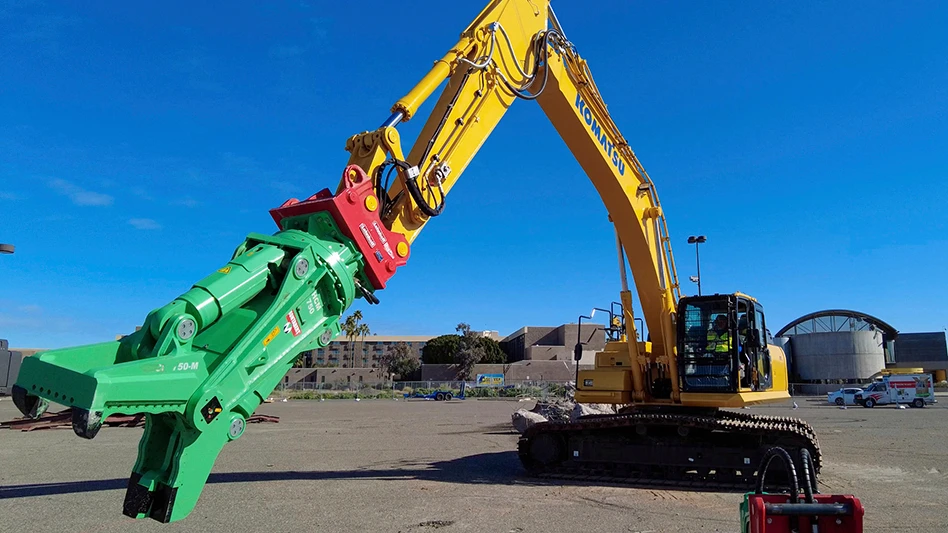
bannafarsai | stock.adobe.com
Construction employment increased in 42 states and the District of Columbia in May compared with a year earlier, while just 24 states added construction jobs from April to May, according to an analysis of federal employment data released by the Associated General Contractors of America (AGC).
Officials with the Arlington, Virginia-based organization say firms are struggling to find new workers because of a lack of funding for construction education programs, limiting monthly employment gains low in many parts of the country.
“Contractors remain busy nationwide, with bulging order books for future work,” AGC Chief Economist Ken Simonson says. “But they are having trouble filling job openings when the industry unemployment rate is only 3.5 percent. That probably accounts for the recent lack of job gains in many states.”
Association officials say the biggest challenge to recruiting new workers is that relatively few people are exposed to construction as a career opportunity while they are in school. For every dollar the federal government invests in encouraging students to attend collection, it invests 20 cents in career and technical education, which includes but is not limited to construction. The AGC has repeatedly urged federal officials to boost funding for construction education programs.
“Many more people would likely be working in high-paying construction careers today if they had a chance to learn about the profession when they were in school,” AGC CEO Stephen E. Sandherr says. “Showing students that you can work in a team, earn a great living and build projects that will last for decades will encourage more people to pursue careers in construction.”
The data
Between May 2022 and May 2023, 42 states and Washington area added construction jobs, while industry employment declined in seven states and held steady in Vermont. Texas added the most jobs during the past year (21,100 jobs, 2.7 percent), followed by New York (12,900 jobs, 3.3 percent), Ohio (8,400 jobs, 3.6 percent) and Oregon (8,000 jobs, 7.0 percent).
Arkansas had the largest percentage increase (10.2 percent, 5,800 jobs), followed by Nebraska (7.8 percent, 4,400 jobs), Oregon, Nevada (6.3 percent, 6,600 jobs) and Idaho (6.3 percent, 4,100 jobs). Colorado lost the most jobs (-1,800 jobs, -1.0 percent), followed by Connecticut (-1,600 jobs, -2.6 percent) and Missouri (-1,200 jobs, -0.9 percent).
For the month, construction employment increased in 24 states, declined in 22 states, and was flat in four states. The largest percentage gains occurred in Louisiana, followed by Virginia, Arkansas (1.1 percent, 700 jobs), New Mexico (1.0 percent, 500 jobs) and New Hampshire (1.0 percent, 300 jobs).
Indiana experienced the largest decline in construction jobs in May (-2,500 jobs, -1.5 percent), followed by Illinois (-2,400 jobs, -1.0 percent) and North Carolina (-2,400 jobs, -0.9 percent). Rhode Island had the largest percentage loss for the month (-4.9 percent, -1,100 jobs), followed by South Dakota (-2.7 percent, -700 jobs).
The backlog
Another factor keeping the industry strong is the construction backlog, which still is healthy at 8.9 months, down slightly from a high water mark of 9.2 months in November and December 2022 and in February of this year, according to the Washington-based Associated Builders and Contractors (ABC).
“During a period of ongoing tumult associated with major bank failures, a near-miss debt ceiling crisis and shifting monetary policy, nonresidential construction backlog has remained remarkably stable,” ABC Chief Economist Anirban Basu says. “At nearly nine months, backlog is essentially unchanged from a year ago and the previous month.
The ABC also reports that construction input costs declined 0.6 percent in May after material price increases in April. Prices declined in all three energy subcategories, the ABC says. Crude petroleum prices were down 10.2 percent in May; unprocessed energy materials were down 7.8 percent; and natural gas prices fell 2 percent for the month. Those factors seem to have combined confidence remains strong in the industry.
“Contractor confidence remains elevated despite massive increases in cost of capital and growing concerns over the nation’s commercial real estate segment, with firms indicating sufficient demand and associated pricing power that will keep profit margins steady or better,” Basu says. “Contractors also expect to bring on additional talent over the next six months, an indication of ongoing industry expansion.”
Latest from Construction & Demolition Recycling
- Cielo investor requests annual meeting
- CDE sets up washing plant on Long Island, NY
- NWRA: NIOSH cuts a step in the wrong direction
- Ferrous price hikes could be poised to pause
- Northstar secures 15-year lease extension for asphalt shingle recycling facility
- Greenwave asks for SEC filing extension
- Construction Plastics Initiative lines up projects
- ShearCore adds dealership group in Canada





